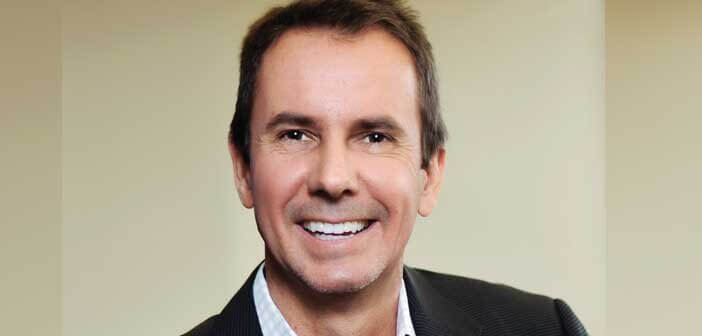Supply chain woes and labor challenges are pain points for the entire hospitality industry, and that doesn’t exclude construction. But construction leaders are excited for 2023 and taking advantage of some trends: Think flexible spaces and new technologies. Hotel Business spoke with Ken Colao, president/CEO, CNY Group; Mary Lipka, VP, PWI Construction Inc.; and Bill Wilhelm, president, R.D. Olson Construction, for their take.
—Abby Elyssa
What were the most rewarding developments for you in 2022?
Colao: 2022 has seen the hospitality industry rebound, properties reopen and new hotels being planned with new ideas and approaches in mind to address guests demands for improved air and light quality, wellness and safety standards and general efficiency and convenience. Tired and obsolete properties are being upgraded, and those that have closed permanently are being converted to serve other uses.
Lipka: This year, there was a noticeable increase in attendance at industry events and conferences. Attendees were not only excited to “get back out,” but they were eager to catch up and collaborate. We also noticed a surge in travel this past year. Seeing a return to pre-pandemic levels is exciting for all of us in the hospitality industry. Our hotel clients expressed a renewed interest in updating their meeting and event spaces while also looking for innovative ways to meet new demands. Many hoteliers are reconfiguring their larger ballrooms into smaller, more intimate spaces or are looking for ways to incorporate flex spaces for their hotel guests. We also saw an investment in technology to help bridge the gap between in-person and virtual events. All this signals a return to normal conditions, which is promising.
Wilhelm: While the recovery in the industry is still well underway, it has been rewarding watching various properties benefit from business and leisure travel. We continue to see renovations and rebranding opportunities leading the charge with active projects underway, while new ground-up planning continues while the economics continue to be their biggest challenge.
Where are we in terms of material supply and supply chain challenges?
Colao: The worst is behind us, but we are still feeling some of the rippling effects that have been affecting the industry as a whole. One recent trend is that many suppliers have transferred or shifted their production to areas with reliable transportations routes to the U.S., such as Mexico and Canada.
Lipka: We continue to see fluctuation in the supply chain. Product and material lead times and availability are ever-changing, making project management and schedule control difficult. Commodities are leveling off, but the supply chain is still very much volatile. To combat this, many owners have pushed for products produced in the Americas but are still overwhelmed by unpredictable delays. As a best practice, we have always promoted supplier diversity to avoid over-reliance on certain suppliers. This approach helps, but overall supply chain challenges continue to be present across all industries.
Wilhelm: Various materials continue to impact project cost and schedules. Early procurement and flexibility for substituting are a must.
What are some challenges for construction in 2023? How should leaders work to overcome them?
Colao: Bank financing and seeking alternate sources of financing; projects suspensions; and increased cancellations of residential and commercial properties have been a significant challenge, and the regulatory environment is impeding progress. Government agencies are short-staffed, not set up for remote work and lack resources for deliverables.
Lipka: Manpower is a challenge. The war for talent is real, making construction extremely competitive. Despite an investment in skilled and trade labor at a national level, finding qualified workers is difficult. At PWI Construction, we “hire for attitude, train for skill,” which has opened the door to workers who may be new to the industry but bring a fresh, diverse skill set, making them uniquely successful. We also offer a comprehensive training program for younger workers. We pair more inexperienced workers with our tenured team for mutual learning. We emphasize career development, work-life balance and offer a strong organizational support system, which has helped us attract and retain talent. Further, we continue to balance human resources with technological adoption. We use technology to help reduce worker burnout and increase productivity.
Wilhelm: Procuring materials while managing resources will remain at the top of the list. Planning, procuring and understanding resource capabilities will be critical for overall success. We have taken a greater initiative in procuring directly and building while strengthening our existing resources in lieu of relying on market conditions.
What are you most excited for in ’23?
Colao: As a business, we are looking forward to executing on the growth strategies we’ve been developing as part of a broader three-year vision for the future. Our backlog is 13 times our current revenue, so this is an incredibly exciting time for us.
Lipka: 2023 is looking good. As market influencers and occupancy rates continue to stabilize, we are seeing projects and improvement plans that were put on hold come back online. We are also seeing properties changing hands and under new ownership, which signals a hospitality investment. As a professional service provider serving hotel owners and managers, we are excited about what 2023 holds.
Wilhelm: The challenge of unpredictably! RDO has seen a 30% growth over the past two years, so we will have the opportunity to test and experience what we have invested in. We have several exciting projects looking to break ground up and down the state of California for which our teams have been prepping. We will once again find ourselves traveling to service our customer base, which will take us back to our grass roots.




